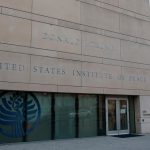Nearly two decades after it was filmed, a new documentary revisits two of the deadliest battles during the early years of the Iraq War by showing the first-person perspective of the men on the ground. But the film almost never came to be.
The Last 600 Meters: The Battles of Najaf and Fallujah was delayed for 17 years after PBS declined to air it for reasons that director Michael Pack shared with the Washington Examiner.
PBS initially rejected the documentary in 2008 because of its perceived pro-military bias and lack of political commentary, even though the Corporation for Public Broadcasting was the project’s principal funder at the start. The network then began to dictate the direction of the final cut, but Pack wasn’t willing to compromise on his vision.
It was only recently that PBS President and CEO Paula Kerger decided to broadcast it upon reexamination. Pack credited her courage in reversing the company’s past decisions.
“We owe her a great debt. It’s not easy to do that, and I really appreciate her doing it,” he said. “She simply saw the film, looked at it with fresh eyes, and said, ‘We should have this on the air,’ and that was a great decision.”
Although he has no proof to confirm, Pack suspected the exposure of PBS’s alleged left-wing bias under the Trump administration may have had something to do with the public broadcaster’s decision to reconsider his long-awaited documentary. However, he was more certain that PBS recognized it hadn’t been satisfying its conservative audience and moved to rectify that by more prominently featuring the nation’s military and veterans in its programming.
The film is unique in its approach to telling the stories of American troops fighting in the Battle of Najaf and the Second Battle of Fallujah, both of which took place in 2004.
Firstly, the soldiers’ personal testimony drives the narrative forward more effectively than a conventional narrator could accomplish. Secondly, the story contains no references to politics as to whether the United States was justified in starting the Iraq War over 20 years ago.
Combat correspondent Jan Bender, whose video footage in Fallujah was used for the movie, appreciated these aspects.
“What Michael took the time and attention to do was zoom in with the war fighters on their level and hear firsthand, personal accounts of how the fight evolved,” Bender told the Washington Examiner. “I think he does a good job of going from the Pentagon to the doorkickers when it comes to the different echelons of the fight and how they all played into it on the ground.”
The two battles in Fallujah were distinct from other battles in terms of the setting in which the U.S. troops had to fight. The urban environment necessitated close-quarters combat as Marines moved from house to house and room to room in a city unfamiliar to them.
One of the Fallujah scenes in the 90-minute documentary features particularly intense fighting in a confined room where enemy combatants took advantage of their elevated position, wounding multiple Marines and their rescuers. The Marines ultimately succeeded in the standoff that day by detonating the building, infamously known as “Hell House.”

In Najaf, the fighting was much more constrained because U.S. and Iraqi forces were told not to damage the Islamic holy site in the heart of the city as they closed in around the Shia insurgent militia. The three-week clash ultimately ended in a negotiated ceasefire rather than total military victory, leaving the soldiers disappointed and dissatisfied. Shortly thereafter, U.S. forces returned to Fallujah for Operation Phantom Fury.
Bender recounted what it was like to simultaneously shoot footage in Fallujah for six weeks while staying aware of his surroundings.
Equipped with an M16 rifle and an M9 pistol, the combat correspondent could quickly pull one of his weapons and “go to work,” as he said, because he had his camera strapped to a sling crafted from a parachute cord. He noted there was a balance between gut instinct and being smart about his location at any given moment, acting as an extension of the team.
There were also constraints that came with 2000s camera technology. One had to work with a limited supply of tapes and batteries, so it was impossible to constantly film, unlike today.
When clearing houses and shooting footage on the fly, Bender often had to balance the rolling camera in his left hand while carrying the pistol at the ready in his right.
“I had to make tough decisions about when I was gonna shoot the 35 millimeter [camera] or the nine millimeter [handgun],” he said.
One of a handful of veterans who attended the Oct. 30 screening of The Last 600 Meters in Washington, D.C., Bender described rewatching his own footage 21 years later as “surreal.”
“I get cold chills when I watch the courage and the bravery of the Marines around me,” the military cameraman continued. “It’s a strange thing to watch it and know the outcome of what’s behind the doors and what’s about to unfold. That’s the benefit of looking back. But in that moment, when you’re approaching that house, kicking that door, clearing that room, there are endless unknowns. And yet the Marines to my left and right just keep pushing.”
Bender praised Pack’s latest documentary as a “timeless” work, even though it feels very much like a product of its time. Pack argued that quality is precisely what distinguishes his film from modern, perhaps more politicized documentaries on Najaf and Fallujah.
“We tried to steer away from being either celebratory or extremely political and tell it as a battle story, like it was Iwo Jima or Gettysburg or any other battle,” he said. “We are lucky to have had these interviews shot in 2007. More recent films don’t have that advantage.”
The longtime documentary filmmaker explained how he had to find the drama in the battle footage and couple that with first-person testimony from the soldiers who describe what they did and what they saw rather than express their opinions about the broader war.
In Pack’s mind, The Last 600 Meters is closer to Restrepo, a straightforward 2010 documentary about the war in Afghanistan, or Warfare, a 2025 feature film retelling the story of an Iraq War mission entirely based on the collective and individual memories of Navy SEALs.
He believes audiences will see the relevance in his documentary today as it relates to the conflicts in Gaza and elsewhere.
After gestating for many years, the documentary is finally releasing at the most opportune time – on the 250th anniversary of the U.S. Marine Corps, the night before Veterans Day. Pack said now is the “right time” for the release because viewers can look back at the two battles as historical events and significant pieces of American history.
EX-WIFE OF DC SNIPER DOCUMENTARY ‘HUNTED BY MY HUSBAND’: A STORY OF ABUSE, FEAR, AND FREEDOM
“I think now you can look back and admire the courage and heroism of the Marines and soldiers in the film without it being clouded by ideology, and that is what we intended 17 years ago,” Pack said.
The Last 600 Meters: The Battles of Najaf and Fallujah premieres on PBS at 10 p.m. Monday and, starting the day after, will be available to stream on Amazon Prime Video.























